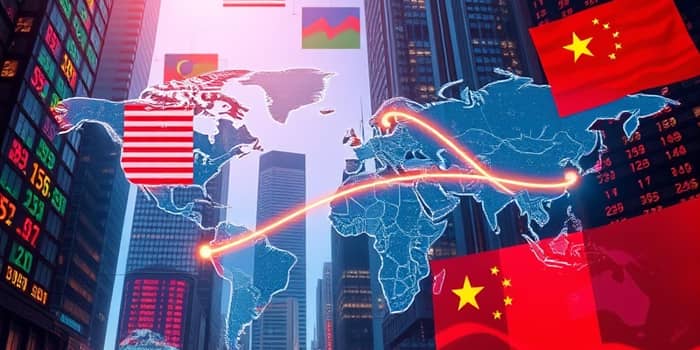
In 2025, a seismic shift in global finance has emerged from the escalating economic confrontation between the United States and China. As both superpowers deploy steep tariffs and aggressive policies, companies and investors are forced to rethink how and where they raise capital. The result is a profound transformation of cross-border listing strategies, with consequences rippling across supply chains, markets, and boardrooms worldwide.
The past decade saw China and the US intertwined through trade, investment, and shared prosperity. Today, that relationship is fractured. Renewed trade wars and tariffs have created an environment in which long-standing assumptions about global finance no longer apply.
Where companies once dreamed of Wall Street debuts, they now weigh regulatory hurdles, audit inspections, and geopolitical risk. Meanwhile, investors scan the horizon for safe harbors beyond the US-China divide.
Understanding the forces at play is essential for any firm exploring cross-border listings or investors allocating capital internationally. Four key drivers have converged to spark this turmoil:
These forces feed into each other, creating a feedback loop of distrust and strategic repositioning.
Chinese firms have historically coveted US capital markets for their depth and visibility. But that allure is dimming under the glare of newly imposed restrictions.
US legislation now allows delisting of foreign companies missing audit standards. Proposed bills demand divestment from Chinese equities in certain sectors. As a result, many issuers are exploring alternative venues to mitigate risk.
Hong Kong, Singapore, and other regional hubs are seizing the moment. Their exchanges have introduced incentives, streamlined listing processes, and offered dual-class share structures to attract high-growth tech and consumer firms.
These centers pitch themselves as resilient alternatives, less vulnerable to US regulatory overreach. Institutional investors are also showing increased interest in pan-Asian ETFs and bond funds, diversifying away from binary US-China exposures.
Multinational corporations and domestic champions alike are recalibrating. Some US firms are shifting R&D and production back home or to allied nations. Others in China are redirecting export efforts toward the Global South, where trade barriers remain lower.
A leading Chinese electric-vehicle maker announced plans to list in both Hong Kong and London, having shelved its New York IPO indefinitely. An American semiconductor firm delayed its China joint venture funding, citing export control compliance as the primary obstacle.
For investors, the landscape now blends opportunity and complexity. Portfolios anchored by US-listed Chinese ADRs have experienced heightened volatility as policy announcements trigger rapid price swings.
Risk management demands new playbooks:
Those who adapt early can capture value ahead of the curve; those who cling to old models risk being left behind.
The US-China financial standoff shows no signs of quick resolution. As both governments double down on protectionist measures, companies must become adept at dynamic planning and scenario readiness.
Practical steps include:
Above all, fostering resilient leadership and adaptive cultures will determine which organizations thrive in this new era.
In a world where financial borders are redrawn overnight, the ability to pivot, diversify, and innovate is not just advantageous—it is essential. Those who anticipate shifts, embrace alternative pathways, and engage collaboratively with stakeholders will chart the course through uncertainty toward sustainable growth.
References













